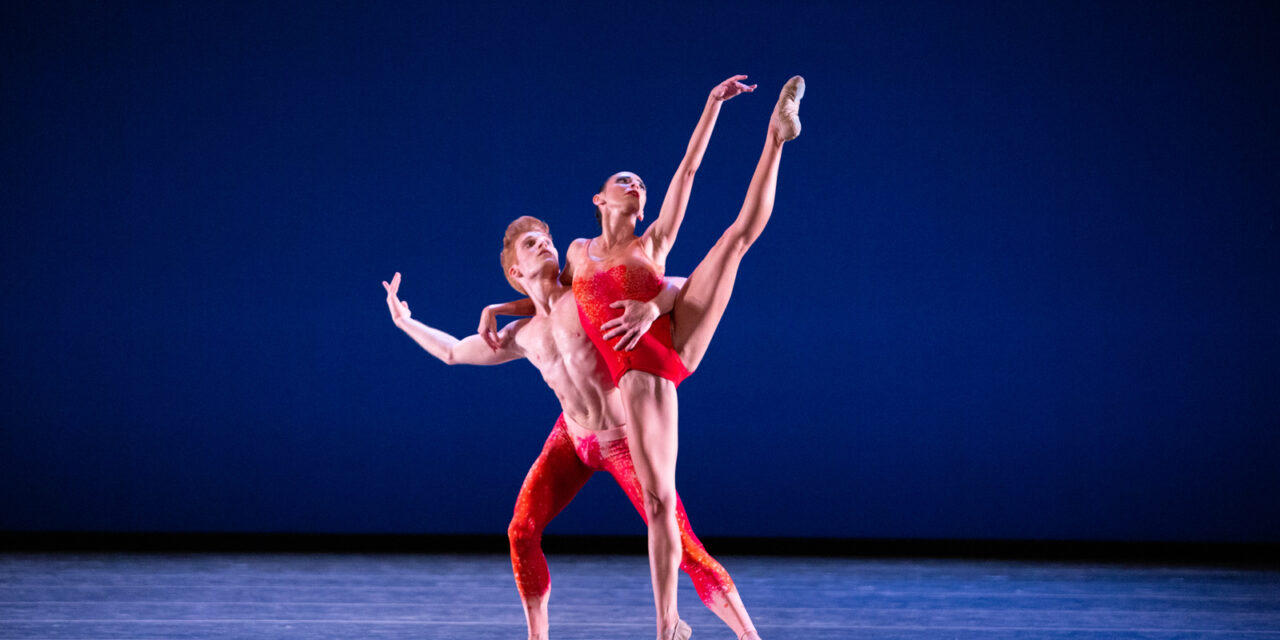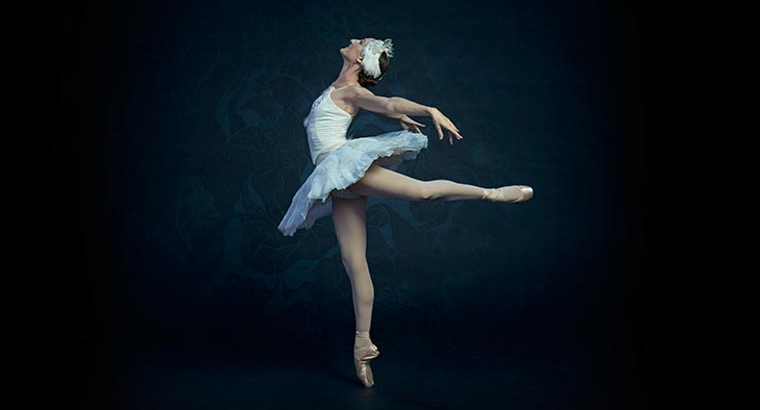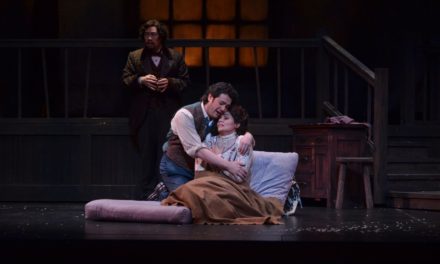“Slaughter” is not generally a term one might associate with contemporary dance or classical ballet. This violent word was however, at the forefront of the first set of performances of the Miami City Ballet‘s 2019-2020 season. The three-part program began with Stravinsky Violin Concerto and Mercuric Tidings before culminating in an elaborate set piece called “Slaughter on Tenth Avenue, ” a work choreographed by George Balanchine from 1936.
Let’s begin with the Stravinsky Violin Concerto. This piece, performed on a bare stage with minimal lighting and accompanied by the work of Nathalia Arja and Alexander Peters for Aria I and Katia Carranza and Renean Cerdeiro for Aria II with Mei Mei Luo playing a virtuoso violin solo, was an interesting moment of contrasts.
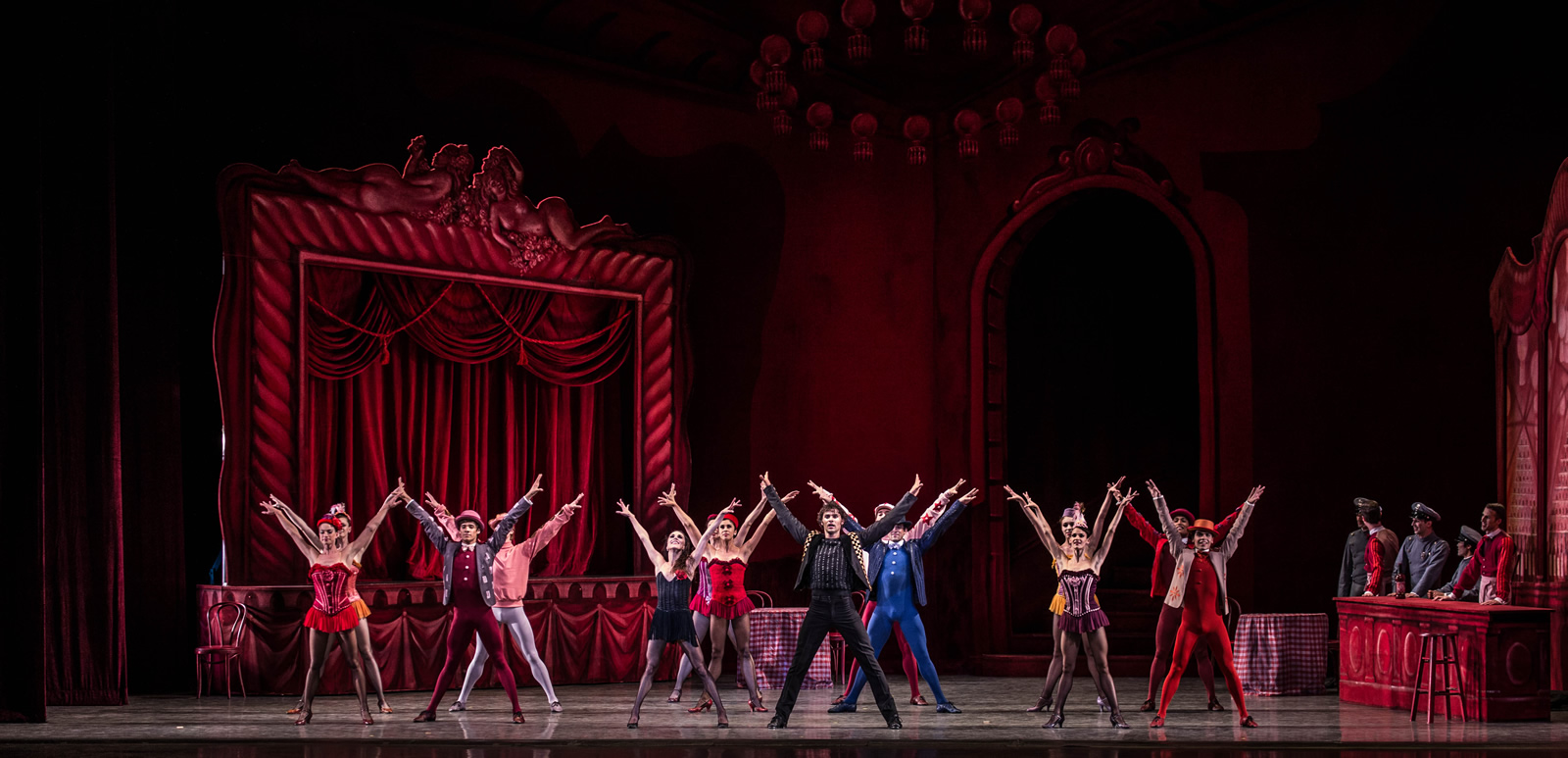
Miami City Ballet dancers in Slaughter on Tenth Avenue. Choreography by George Balanchine © The George Balanchine Trust. Photo © Alexander Iziliaev.
There was hidden sleekness, a kind of chaste sensuality in this Balanchine work. It felt a bit strange to be in Miami on this grand night and bear witness to such traditional stylings in a work of ballet, particularly with Stravinsky’s music as the backdrop. However, upon viewing the entire program, the Violin Concerto served as a perfect table-setter or aperitif, a delicate, dry cocktail that would entice and bemuse, as it revealed a hint of passions to come.
The middle segment of the evening’s presentations was called “Mercuric Tidings,” an apt title for this pristine display of body movement led by Nathalia Arja and Alexander Peters, and choreographed by Paul Taylor. This work from 1982 has aged well as the Miami City Ballet took it to a very special place, again, with minimal lighting and no set to speak of.
The show was the dancers, the dancers were the show, and that is perfectly fine.
The evening concluded with its magnum opus: Slaughter on Tenth Avenue, a work of strange pathos and comedic violence. It is as if Mel Brooks teamed up with Martin Scorsese to craft a story that George Balanchine would interpret for the graceful movements and the repressed tensions of perfect bodies and young hearts.
The star of this show was Jordan-Elizabeth Long, playing the Strip Tease Girl in a performance that ranged from sexy and absurd to seductive and sweet. It is one thing to exude sensuality. It is another to possess seduction and weaponize it like a magician casting a spell upon an entire audience. Such was the effect of Ms. Long’s movements and steps, gestures and smiles on the stage of the Arsht Center on this night.
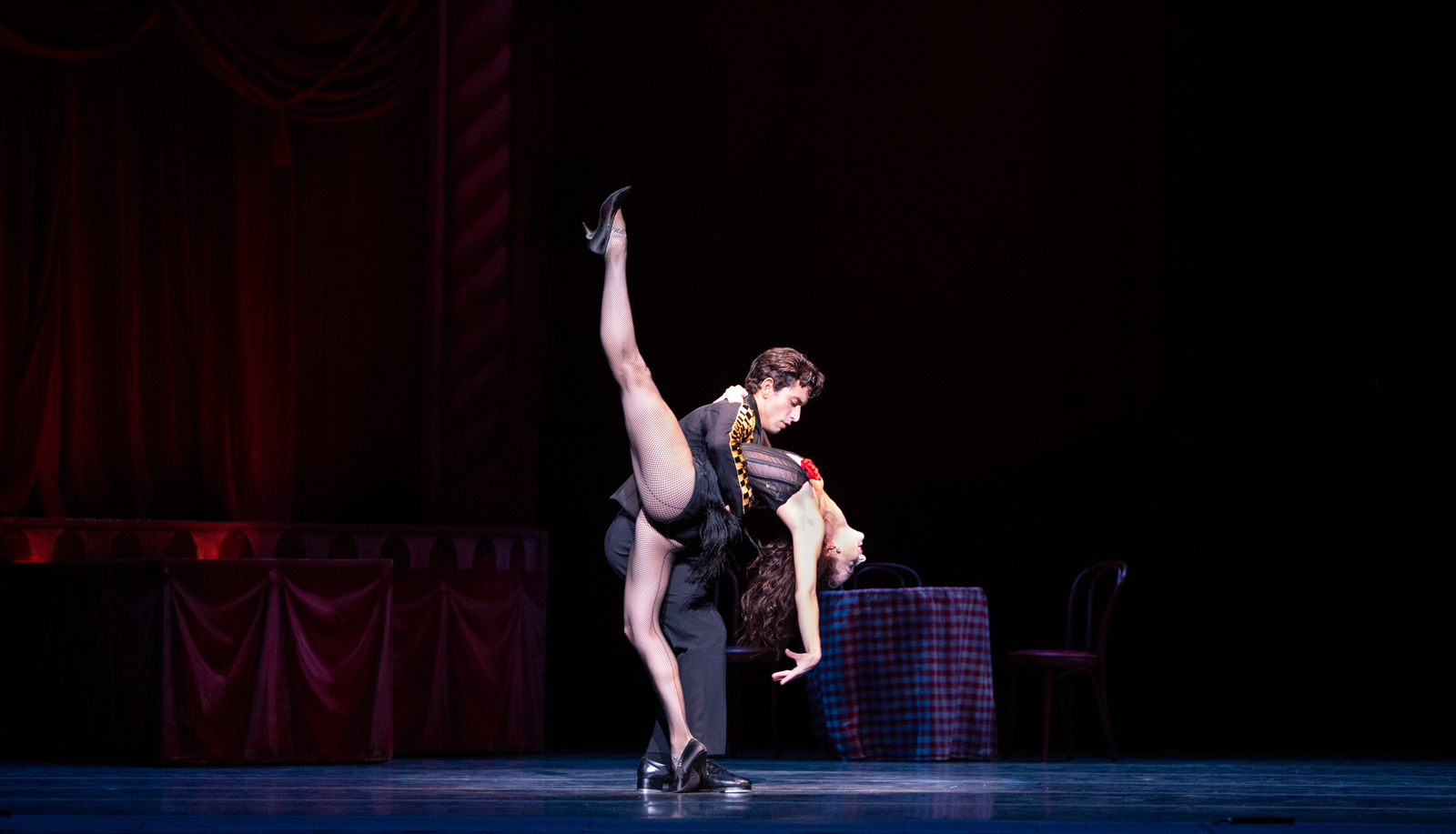
Jordan-Elizabeth Long and Kleber Rebello in Slaughter on Tenth Avenue. Choreography by George Balanchine © The George Balanchine Trust. Photo © Alexander Iziliaev.
With this work I am speaking of more than sex appeal, more than sexiness. What we, the audience members witnessed in this number was the very mining of the essence of the body’s desire to express and reveal desires primal and superficial both. It is this mining, this depth of corporeal expression that renders ballet and dance in general, so powerful, so visceral and something that can only be fully appreciated live and in the flesh.
From her wondrously playful smiles to her utilization of every bone and inch of he frame to dramatic effect, Ms. Long was able to go beyond the proximities of kitsch to which “Slaughter” sometimes takes aim, and take the performance to a level approaching a more classically dramatic, even ribald form of theater.
Her accompaniment of performers, from Kleber Rebello, Carlos Quenedit, and Damian Zamorano to Ariel Rose and Bradley Dunlap, all made for a spectacular display of joyous bodily compositions.
Interestingly, this was the only piece with an established set. The design of the stage and its props was expertly crafted by Jo Mielziner with cabaret-like costumes by Irene Sharaff. The craft involved in the elaborate set was equalled by the fabulously lurid light of John Hall.
Slaughter would begin when a character out of an Andrei Tarkovsky film appeared in front of the curtains on stage and engaged with another gangster-type figure who would later sit in the front seat of the first box, stage left. It was a cute and comic bit of theater and outside the box antics that helped lay the pathway towards this elegantly strange and evocative ensemble work.
The night’s performances were yet another triumph for this esteemed company and its Artistic Director, Lourdes Lopez. It is no mystery why the Miami City Ballet has built such a loving reputation across the world of traveling dance companies, especially when one considers the raves and adoration it receives when traveling to faraway cities like New York.
South Florida is blessed to be the home of the Miami City Ballet, a company of exceptional eclecticism and whose vibrant displays of dance artistry enhance the lives of all who are fortunate to bear witness.
